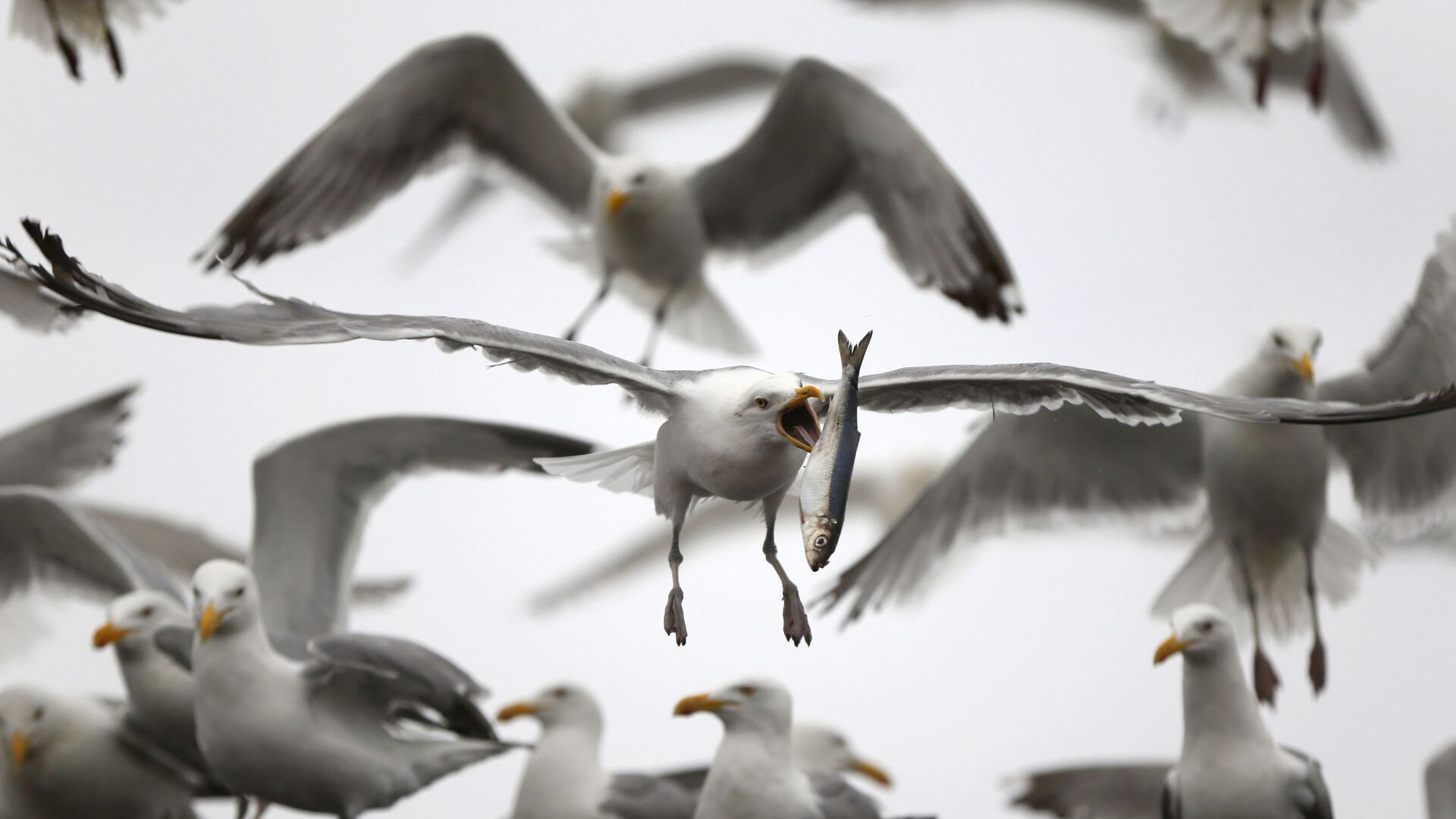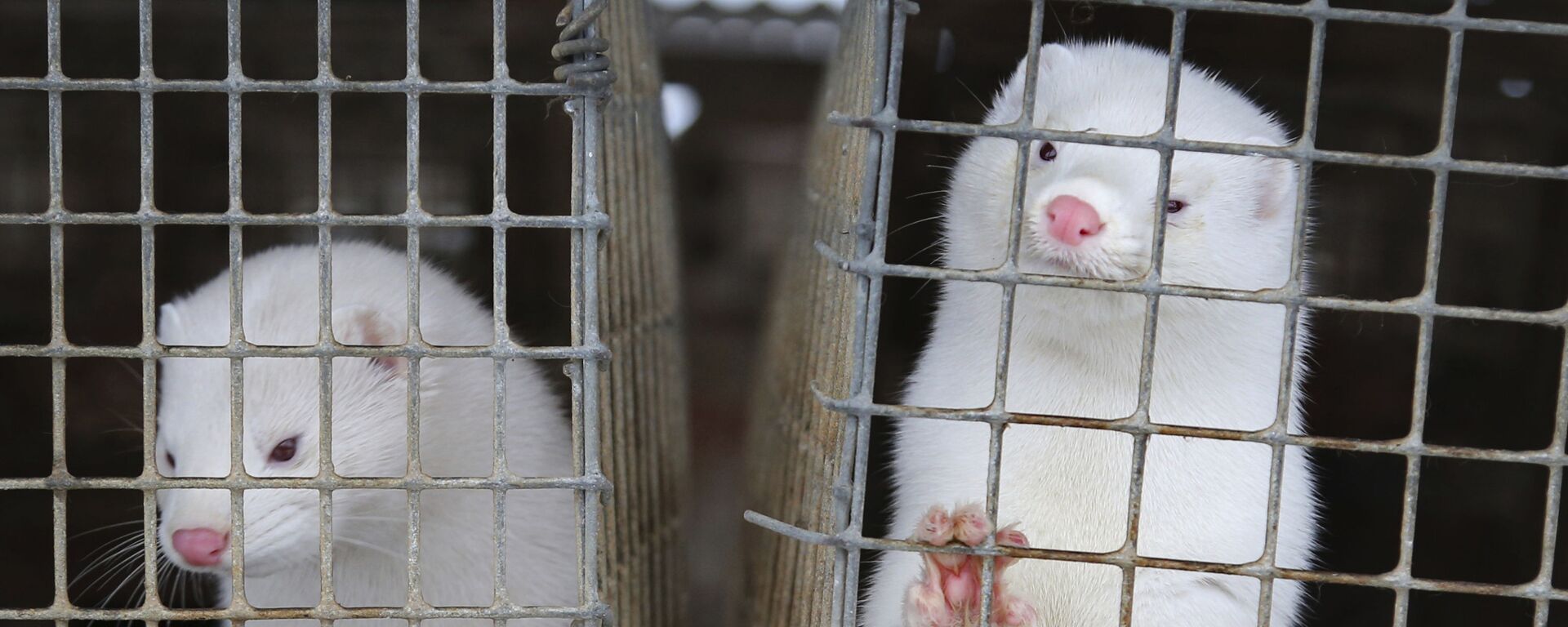https://sputnikglobe.com/20220727/starving-danish-seagulls-turn-to-cannibalism-due-to-closure-of-mink-farms--1097839415.html
Starving Danish Seagulls 'Turn to Cannibalism Due to Closure of Mink Farms'
Starving Danish Seagulls 'Turn to Cannibalism Due to Closure of Mink Farms'
Sputnik International
In 2020, Denmark opted for a preventive cull of 15 million healthy mink in a bid to prevent mutated COVID-19 from interfering with the vaccination campaign... 27.07.2022, Sputnik International
2022-07-27T07:07+0000
2022-07-27T07:07+0000
2022-07-27T07:07+0000
scandinavia
denmark
environment
seagull
mink
https://cdn1.img.sputnikglobe.com/img/102444/81/1024448141_0:0:3107:1748_1920x0_80_0_0_ef17b4c65414563a1b6af91f960c6082.jpg
The closure of Danish mink farms amid the COVID-19 scare in 2020 appears to have had unexpected and far-reaching consequences for the country's wildlife.Seagulls, a fixture of the Danish coastline, are starving and have even turned to cannibalism, eating each others' eggs and young with the strongest preying on the weakest. This means that the current breeding season may be the shortest ever amid already-declining populations, TV2 reported.Previously, the gulls used to fly along mink farms and feast on food rests and garbage. Now, with Danish mink farms shut down, this convenient option is not available any more.According to Flensted, while cannibalism is not a sight you see everywhere, it is normal behavior for the herring gull if there is a lack of food.According to Flensted, a reduced and more natural herring gull population is fine as long as it is not exterminated. He predicted that the stock will return to a more natural level, because it has been artificially driven by waste from landfills and from rubbish bins across cities.In 2020, Denmark settled for a preventive cull of 15 million healthy mink amid the spread of COVID-19 and the fear that it would interfere with the vaccination process. The decision effectively eradicated a thriving sector, as Denmark was one of the world's leading producers and exporters of fur, and has since been haunting the ruling Social Democrats. It resulted, among other things, in a groundwater pollution scare and downright tragicomic instances of “zombie mink”: swollen cadavers emerging from their shallow graves.
https://sputnikglobe.com/20210514/denmark-starts-digging-up-millions-of-rotting-mink-carcasses-to-stop-contamination-1082885733.html
scandinavia
denmark
Sputnik International
feedback@sputniknews.com
+74956456601
MIA „Rossiya Segodnya“
2022
News
en_EN
Sputnik International
feedback@sputniknews.com
+74956456601
MIA „Rossiya Segodnya“
Sputnik International
feedback@sputniknews.com
+74956456601
MIA „Rossiya Segodnya“
scandinavia, denmark, environment, seagull, mink
scandinavia, denmark, environment, seagull, mink
Starving Danish Seagulls 'Turn to Cannibalism Due to Closure of Mink Farms'
In 2020, Denmark opted for a preventive cull of 15 million healthy mink in a bid to prevent mutated COVID-19 from interfering with the vaccination campaign, putting down an entire lucrative industry. The side-effects of that decision are now being felt in Denmark's natural environment.
The closure of Danish mink farms amid the COVID-19 scare in 2020 appears to have had unexpected and far-reaching consequences for the country's wildlife.
Seagulls, a fixture of the Danish coastline, are starving and have even turned to cannibalism, eating each others' eggs and young with the strongest preying on the weakest. This means that the current breeding season may be the shortest ever amid already-declining populations, TV2
reported.
Previously, the gulls used to fly along mink farms and feast on food rests and garbage. Now, with Danish mink farms shut down, this convenient option is not available any more.
“It is a phenomenon that has been observed throughout the Limfjord and probably throughout the country, that the seagulls lack food and the population is declining. This is the second year in a row that they have had few young, and the adult herring gulls are getting quite old, so it will take some time before the population finds a new home,” biologist Knud Flensted told TV2.
According to Flensted, while cannibalism is not a sight you see everywhere, it is normal behavior for the herring gull if there is a lack of food.
“The herring gull is an omnivorous species. It eats fish, crabs, garbage, baby birds, eggs and so on,” Flensted said, stressing that this is not a disaster. “It is certainly positive that the mink farms no longer provide a self-service table for seagulls, crows and others who have benefited from the easy access to food.”
According to Flensted, a reduced and more natural herring gull population is fine as long as it is not exterminated. He predicted that the stock will return to a more natural level, because it has been artificially driven by waste from landfills and from rubbish bins across cities.
In 2020, Denmark settled for a preventive cull of 15 million healthy mink amid the spread of COVID-19 and the fear that it would interfere with the vaccination process. The decision effectively eradicated a thriving sector, as Denmark was one of the world's leading producers and exporters of fur, and has since been haunting the ruling Social Democrats. It resulted, among other things, in a groundwater pollution scare and downright tragicomic instances of “zombie mink”: swollen cadavers emerging from their shallow graves.


